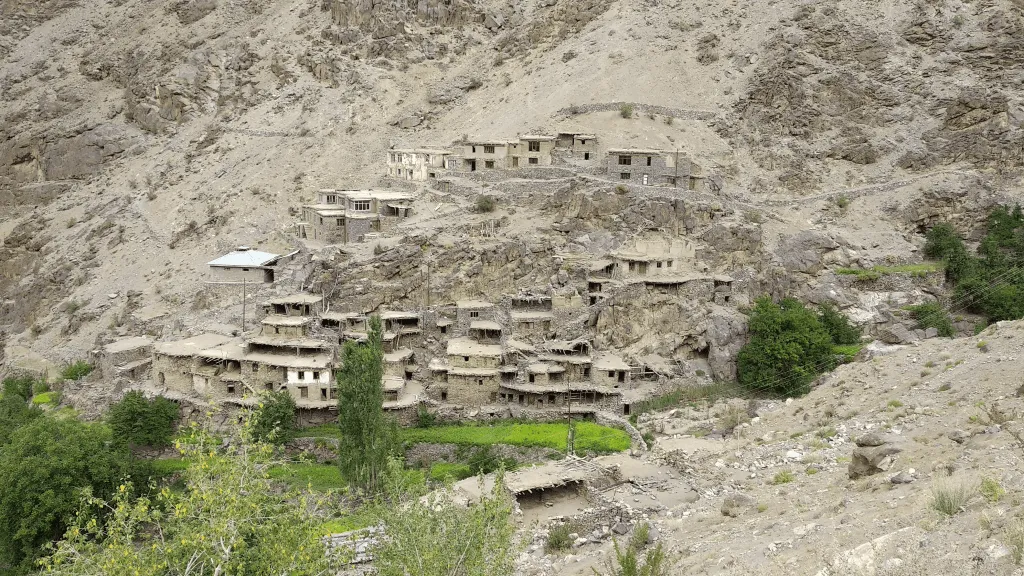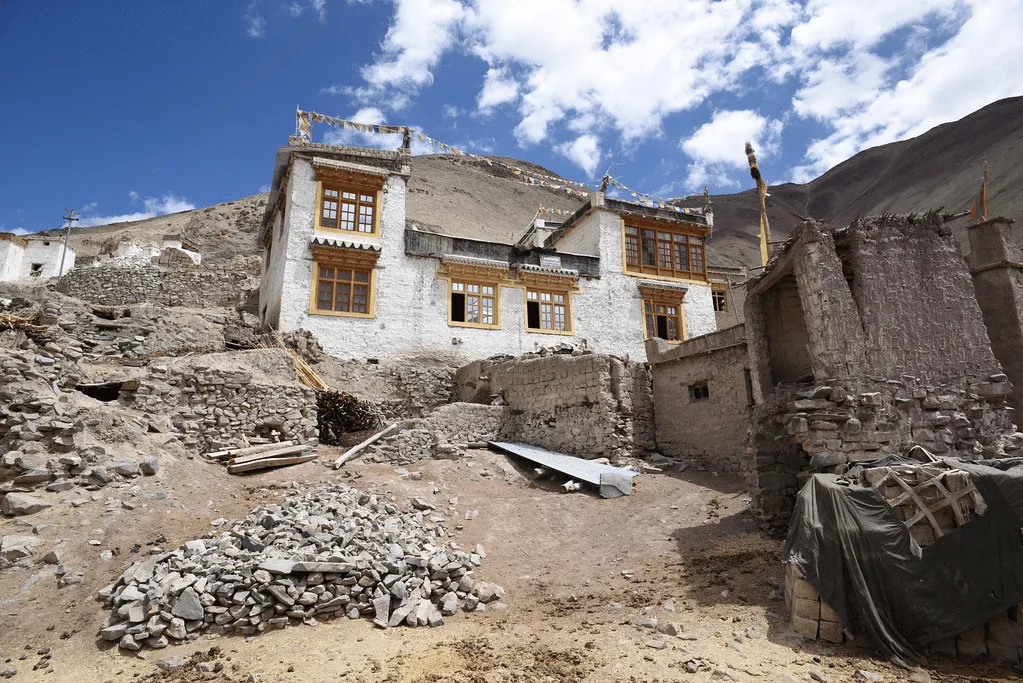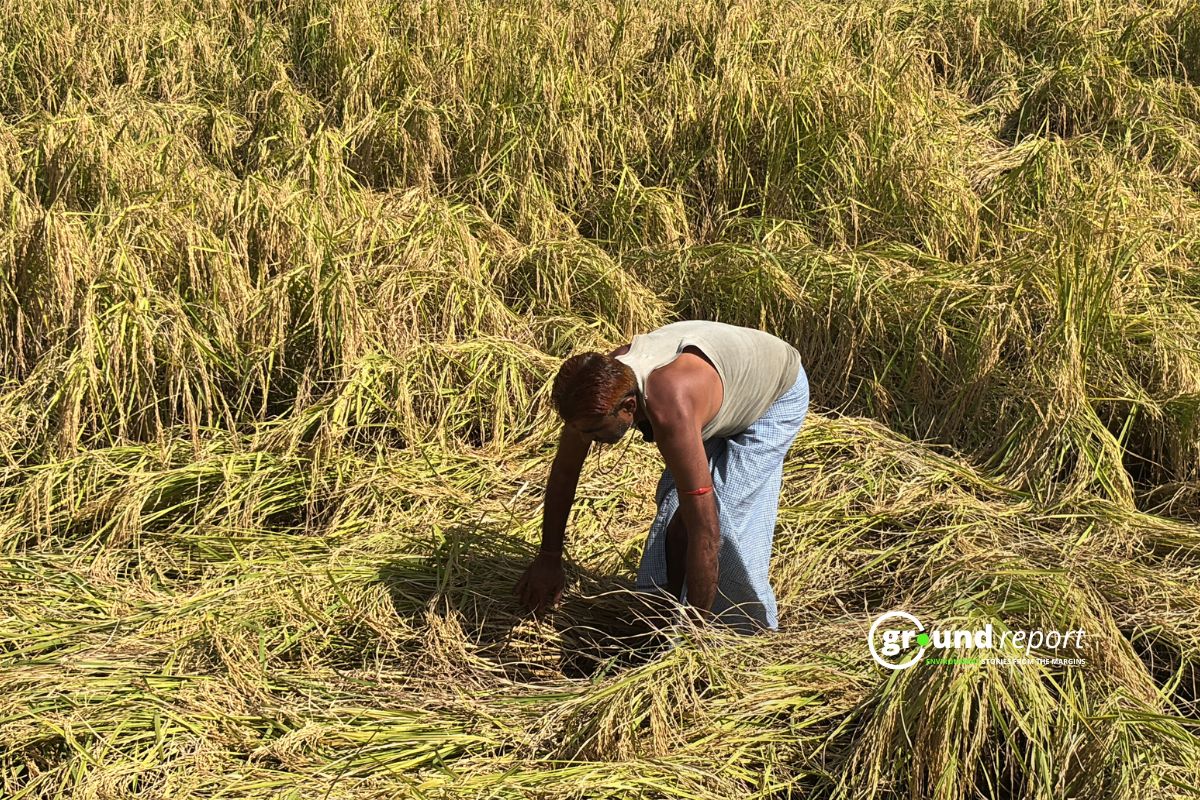In Ladakh, most of the Kargil villages are suffering from a drought-like situation. Most villages rely on glacial or spring water for irrigation and drinking water needs, which have been affected by depleting glaciers and the drying of spring water.
Kargil Villages facing drought
The Union Territory Administration has been working to find alternative scientific means to solve the water crisis. In this regard, solar lift irrigation schemes have been pilot-tested and most villages require the scheme of water irrigation by solar elevation.
Meanwhile, a delegation from Hunderman Brok, the last town on the line of control, visited the Deputy Governor of Ladakh, R. K. Mathur, and raised various issues related to the people of Hunderman Brok. They shared about the scarcity of drinking water and the need for water to irrigate the fields due to less snowfall in the winter. They requested the sanction of solar elevation irrigation systems for Hunderman Brok.

The delegation also requested intervention in recruiting locals for porter work in the Indian Army so that people could earn a living. They also reported on the progress of Jal Jeevan Mission’s work in their village.
Residents depend on tanker trucks
Other areas of Kargil city, such as the Balti Bazaar, Poyen and the main market, rely on hand pumps for their water. On the outskirts and higher reaches, tanker trucks supply water. These places are the TV Station, Tumail Colony, Petrol Pump, Police Line, Andoo, Haidary Mohallah and Baroo.
According to the locals, six of the 88 hand pumps are not working. Pipes freeze in the winter, causing cracks and leaks in the summer. Construction sites, including roads and snow clearing, often break open water pipes as well. Worse yet are the drinking water pipes that run into the drains.

The use of motorized pumps to extract the maximum water from the supply pipes by some residents is causing supply depletion and daily frustration among many. Residents who depend on water supply via tanker trucks have serious complaints about insufficient and erratic supply. The water supply starts very early in the morning until around noon, however, due to labour and machinery shortages, PHE is unable to meet the demand.
Increasingly, congested construction creates obstacles to proper pipe placement in addition to funding issues. The department carries out annual repairs to somehow keep the water running in the pipes.
Water crises in Kargil
Ali Hussian, a resident of the Police colony Kargil, told Ground Report
“The residents of the colony get water only three times a week despite paying fees of around 1,200 to 1,500 rupees every six months for a daily supply of around 200 to 500 litres. The water from the existing irrigation canal is not suitable for drinking as people throw rubbish into it. Modern toilets are barely functional due to the scarcity of water; that’s why we use the traditional dry ones”.
Mohammed Subhan, a resident of the Kargil City TV station area, said:
“Water crises are mainly prevalent in newly built colonies, where supply via tanker trucks and winter frosts make the situation worse, as we mostly use flush toilets. Deposits outside houses are frozen. Poor residents do not get enough water, as sometimes construction works consume the public part of the water.”

Feroz Khan, a 28-year-old native of Drass, also has a house in Balti Bazaar. He recalled that not long ago the water from the Suru River was suitable for drinking, however, the contamination of the river water forced them to stop using it. Defecation in the river is more alarming in the city of Kargil.
Dozens of small glaciers disappeared in recent years
In Kargil, dozens of small glaciers have disappeared and the Siachen Glacier is rapidly melting, causing flooding of the Nubra River. The Siachen Glacier is the source of the Nubra River, which goes on to form the Nubra Valley to the northeast of the Ladakh Valley. Since climate change has a direct and adverse effect on this region, Ladakh is witnessing frequent flash floods due to the disappearance of glaciers.
According to local scientists, the entire Kargil area has been threatened as the Zanskar Glacier is receding. Glacier lakes have begun to form in the upper regions due to rapid snow melt. Shakeel Ramshu, head of the Earth Sciences department at the University of Kashmir, said:
“It is a dangerous situation in the Ladakh region, which needs the immediate attention of the government.”
He added that the disappearance of small glaciers shows the speed with which global warming was impacting this region.

Nun-Kun or the Kangriez Glacier (as it is known locally), which is the main source of the Suru River, shows signs of rapid retreat.
“The Nun road, which goes towards Zanskar, was covered with glaciers and snow until a few years ago. Now there is very little snow here in winter,” said Ghulam Ali, a local resident.
The Kargil region forms a vast mountainous region between the Great Himalayan Range in the southwest and the Indus Valley in the northeast and occupies the southern part of Ladakh. It has about 1,796 glaciers, confined to the Upper Indus Basin, housed in the Zaskar, Suru, and Drass sub-basins. The Drass sub-basin has 150 glaciers covering an area of 152.6775 km2 with an ice volume of 62.02 km3.
Keep Reading
Indian agriculture household earns just Rs. 10,218 in a month: Govt
Post-harvest losses still high, reveals data shared in Lok Sabha
Khadi Haat village’s power-free wastewater treatment solution and more
Support us to keep independent environmental journalism alive in India.
Follow Ground Report on X, Instagram and Facebook for environmental and underreported stories from the margins. Give us feedback on our email id greport2018@gmail.com.
Don’t forget to Subscribe to our weekly newsletter, Join our community on WhatsApp, Follow our Youtube Channel for video stories.







